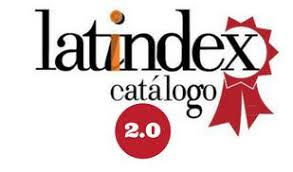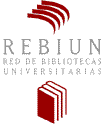Comparativa y calibración de índices de confort para la temporada cálida en una ciudad semi-árida del noroeste de México
DOI:
https://doi.org/10.22320/07190700.2024.14.02.02Palabras clave:
modelo psicofisiológico, confort térmico, actividad intensa, calibración de escalaResumen
El análisis sobre modelos de confort y el efecto de las condiciones microclimáticas extremas es importante para determinar la relación entre las afectaciones de salud en personas que realizan actividades en áreas abiertas. El trabajo propone un modelo psicofisiológico regional, para individuos con actividades físicas intensas (deportivas) en espacios públicos exteriores en clima cálido seco extremoso (Mexicali, Baja California), el que se contrastó con el Universal Thermal Climate Index con el propósito de calibrarlo y así establecer una base comparativa para formular pruebas de hipótesis que evalúen su aplicabilidad. Se encontró que el modelo regional alcanzó un 67% de aciertos en comparación del Universal Thermal Climate Index que obtuvo 31% de aciertos no calibrado y 53% de aciertos calibrado. Como conclusión de este proceso se destaca la pertinencia, precisión y eficiencia en la utilización de modelos específicos regionales sobre aquellos que tienden a generalizar las condiciones de la percepción térmica.
Descargas
Citas
BARCIA-SARDIÑAS, S., OTERO-MARTÍN, M., HERNÁNDEZ-GONZÁLEZ, D., GÓMEZ-DÍAZ, D., y GÓMEZ-CAMACHO, L. (2020). Comparación de diferentes índices bioclimáticos en Cuba. Revista Cubana de Meteorología, 26(3). http://scielo.sld.cu/scielo.php?script=sci_arttext&pid=S2664-08802020000300008&lng=es&tlng=es.
BLAZEJCZYK, K., TOKURA, H., BORTKWCZ, A., y SZYMCZAK, W. (2000). Solar radiation and thermal physiology in man [Paper presentation]. International Congress of Biometeorology & International Conference on Urban Climatology, 15, 1999, Sydney. Geneva: World Meteorological Organization, p. 267-272.
BLAZEJCZYK, K., EPSTEIN, Y., JENDRITZKY, G., STAIGER, H., y TINZ, B. (2012). “Comparison of UTCI to selected thermal indices”. International Journal of Biometeorology, 56(3), 515– 535.
BLAZEJCZYK, K. y KUNERT, A. (2011). Bioclimatic principles of recreation and tourism in Poland. Institute of Geography and Spatial Organization.
BOJÓRQUEZ-MORALES, G., GÓMEZ-AZPEITIA, G., GARCÍA-CUETO, R., ROMERO-MORENO, R., LUNA-LEÓN, A., GARCÍA-GÓMEZ, C., y RUIZ-TORRES, P. (2014). Confort térmico en espacios públicos exteriores en periodo cálido. Ekotectura, Bogotá, Colombia.
BOUSSAIDI, K., DJAGHROURI, D., BENABBAS, M. y ALTAN, H. (2023). Assessment of Outdoor Thermal Comfort in Urban Public Space, during the Hottest Period in Annaba City, Algeria. Sustainability, 15(15), 11763. https://doi.org/10.3390/su151511763
BRÖDE, P., FIALA, D., BŁAŻEJCZYK, K., HOLMÉR, I., JENDRITZKY, G., KAMPMANN, B., TINZ, B., y HAVENITH, G. (2012). Deriving the operational procedure for the Universal Thermal Climate Index (UTCI). International Journal of Biometeorology, 56(3), 481–494. https://doi.org/10.1007/s00484-011-0454-1
CANDIDO, C., y de DEAR, R. (2012). From thermal boredom to thermal pleasure: a brief literature review. Ambiente Construído, 12(1), 81-90. https://doi.org/10.1590/S1678-86212012000100006
CARLUCCI, S., y PAGLIANO, L. A. (2012). A review of indices for the long-term evaluation of the general thermal comfort conditions in buildings. Energy and Buildings, 53(1), 194-205. https://doi.org/10.1016/j.enbuild.2012.06.015
DASHRATH-KHAIRE, J., ORTEGA-MADRIGAL, L., y SERRANO-LANZAROTE, B. (2021). Outdoor thermal comfort in built environment: A review of studies in India. Energy and Buildings, 303, 113758. https://doi.org/10.1016/j.enbuild.2023.113758
DE FREITAS, C. R., y GRIGORIEVA, E. A. (2015). A comprehensive catalogue and classification of human thermal climate indices, International Journal of Biometeorology, 59, 109-120. https://doi.org/10.1007/s00484-014-0819-3
DE DEAR, R., (2011). Revisiting and old hypothesis of human thermal perception: alliesthesia. Building Research & Information, 39(2), 108-117. https://doi.org/10.1080/09613218.2011.552269
EPSTEIN, Y., y MORAN, D. S. (2006). Thermal comfort and the heat stress indices. Industrial Health, 44(3), 388-398. https://doi.org/10.2486/indhealth.44.388
FANG, Z., FENG, X., LIU, J., LIN, Z., MING-MAK, J., NIU, J., TSE, K., y XU, X. (2019). Investigation into the differences among several outdoor thermal comfort indices against field survey in subtropics, Sustainable Cities and Society, 44, 676-690. https://doi.org/10.1016/j.scs.2018.10.022
FERNÁNDEZ GARCÍA, F., GALÁN, E., y CAÑADA TORRECILLA, R. (2012). Caracterización del régimen bioclimático medio del área metropolitana de Madrid, mediante la aplicación de la temperatura fisiológica (PET), Territoris, 8, 505-514. https://raco.cat/index.php/Territoris/article/view/259755
GHANI, S., MAHGOUB, A., BAKOCHRISTOU, F. y ELBIALY, E. (2021). Assessment of thermal comfort indices in an open air-conditioned stadium in hot and arid environment, Journal of Building Engineering. 40, 102378. https://doi.org/10.1016/j.jobe.2021.102378
GONZÁLEZ GONZÁLEZ F. (2021). Propuesta metodológica para el análisis de las afectaciones en la salud y confort térmico del ser humano debido al cambio climático en tres regiones de México, Acta universitaria, 31, e3071, https://doi.org/10.15174/au.2021.3071
International Organization for Standardization. ISO 10551. (2019) Ergonomics of thermal enviroment – assessment of the influence of the thermal environment using subjective judgement scales. Ed. International Organization for Standardizations, Ginebra.
International Organization for Standardization. ISO 7730, (2006). Moderate thermal enviroment-determination of the PMV and PPD indices and specifications of conditions of thermal confort. E.U.A.: International organizations for Standardizations.
International Organization for Standardization. ISO 9920. (2007). Ergonomía del ambiente térmico. Estimación del aislamiento térmico y de la resistencia a la evaporación de un conjunto de ropa. E.U.A.: International organizations for Standardizations.
International Organization for Standardization. ISO 7726. (1998). Ergonomía de los ambientes térmicos. Instrumentos de medida de las magnitudes físicas. E.U.A.: International organizations for Standardizations.
JIAQI, N., JIANGPENG, X., HONGQIAO Q., JINMING H., JIANFENG D., GUIFENG H., y JIE Y., (2022). Influence of thermal comfort of green spaces on physical activity: Empirical study in an urban park in Chongqing, China, Building and Environment, 219, 109168. https://doi.org/10.1016/j.buildenv.2022.109168
JENDRITZKY, G., DE DEAR, R., y HAVENITH, G. (2012). UTCI—Why another thermal index?. International Journal of Biometeorology, 56(3), 421-428. https://doi.org/10.1007/s00484-011-0513-7
JING, W., QIN, Z. y MU, T. (2024). Evaluating thermal comfort indices for outdoor spaces on a university campus, Scientific Reports, 14, 21253. https://doi.org/10.1038/s41598-024-71805-5
JOHANSSON, E. (2006). Influence of urban geometry on outdoor thermal comfort in a hot dry climate: a study in Fez, Morocco, Building and Environment, 41(10), 1326-1338. https://doi.org/10.1016/j.buildenv.2005.05.022
LAI, D., LIAN, Z., LIU, W., GUO, C. LIU, W., LIU, K. y CHEN, Q., (2020). A comprehensive review of thermal comfort studies in urban open spaces, Science of The Total Environment, 742, 140092. https://doi.org/10.1016/j.scitotenv.2020.140092
LIU, Z., LI, J., y XI, T. (2023). A Review of Thermal Comfort Evaluation and Improvement in Urban Outdoor Spaces, Buildings, 13(12), 3050. https://doi.org/10.3390/buildings13123050
LÓPEZ-CAÑEDO, J.Y., RINCÓN-MARTÍNEZ, J.C., y FERNÁNDEZ MELCHOR, F. (2021). Estimation of thermal comfort by physical variable of the thermal environment: A study in open spaces at UABC-Sauzal, México, Revista de Ciencias Tecnológicas, 4(2), 58–80. https://doi.org/10.37636/recit.v425880
MANAVVI, S. y RAJASEKAr, E., (2021). Evaluating outdoor thermal comfort in “Haats” – The open air markets in a humid subtropical region, Building and Environment, 190, 107527. https://doi.org/10.1016/j.buildenv.2020.107527
MANAVVI, S., y RAJASEKAR, E. (2022). Evaluating outdoor thermal comfort in urban open spaces in a humid subtropical climate: Chandigarh, India, Building and Environment, 209, 108659. https://doi.org/10.1016/j.buildenv.2021.108659
MANAVVI, S., y RAJASEKAR, E., (2023). Assessing thermal comfort in urban squares in humid subtropical climate: A structural equation modelling approach, Building and Environment, 229, 109931. https://doi.org/10.1016/j.buildenv.2022.109931
MARCHANTE, G., y GONZÁLEZ, A. (2020). Evaluación del confort y disconfort térmico, Ingeniería Electrónica, Automática y Comunicaciones, 41(3), 21-40. http://scielo.sld.cu/scielo.php?script=sci_arttext&pid=S1815-59282020000300021&lng=es&tlng=es
MARTÍN DEL CAMPO SARAY, F. J., Valladares ANGUIANO, R., BOJÓRQUEZ MORALES, G., y GARCÍA GÓMEZ, C. (2020). Development of thermal habitability index in cold period for outdoor public spaces. Revista De Ciencias Tecnológicas, 3(3), 145–172. https://doi.org/10.37636/recit.v33145172
MARTÍNEZ-BERMÚDEZ, E., y RINCÓN-MARTÍNEZ, J. C. (2024). Estimación del confort térmico en espacios exteriores: evaluación del periodo frío en Ensenada, Baja California. Revista de Arquitectura (Bogotá), 26(2), 151-166. https://doi.org/10.14718/REVARQ.2024.26.3637
MONTEIRO, L., y ALUCCI, M. (July 2011). Proposal of an outdoor thermal comfort index: empirical verification in the subtropical climate [Conference Paper]. Architecture And Sustainable Development, Proceedings of PLEA 2011, Louvain-la-Neuve, Belgium. https://www.researchgate.net/publication/345855050_Proposal_of_an_outdoor_thermal_comfort_index_empirical_verification_in_the_subtropical_climate
MONTEIRO, L., y ALUCCI, M. (29 June - 3 July 2009). Thermal Comfort Index for the Assessment of Outdoor spaces in Subtropical Climates [Conference Paper]. The seventh International Conference on Urban Climate, Yokohama, Japan. http://www.ide.titech.ac.jp/~icuc7/extended_abstracts/pdf/375911-1-090514092824-005.pdf
NIKOLOPOULOU, M., y LYKOUDIS, S. (2006). Thermal comfort in outdoor urban spaces: Analysis across different European countries, Building and Environment, 41(11), 1455-1470. https://doi.org/10.1016/j.buildenv.2005.05.031
NÚÑEZ-DE ANDA, A., RINCÓN-MARTÍNEZ, J.C., BOJÓRQUEZ-MORALES, G., y LLAMAS-ESTRADA, A. (2024). Confort higrotérmico en espacios públicos abiertos de clima mediterráneo en periodo de transición térmica, Ingeniería Investigación y Tecnología, 25(1), 1-12. https://doi.org/10.22201/fi.25940732e.2024.25.1.005
PENG, Y., FENG, T., y TIMMERMANS, H. (2019). A path analysis of outdoor comfort in urban public spaces, Building and Environment, 148, 459-467. https://doi.org/10.1016/j.buildenv.2018.11.023
RINCÓN-MARTÍNEZ J. C., MARTÍNEZ-TORRES, K., GONZÁLEZ-TREVIZO, M. E. y FERNÁNDEZ-MELCHOR, F (2020). Modelos matemáticos para estimar el confort térmico adaptativo en espacios interiores: Un estudio en la transición térmica de Ensenada, B.C., Ingeniería Revista Académica, Universidad Autónoma de Yucatán, 24(1), 1-17. https://www.revista.ingenieria.uady.mx/ojs/index.php/ingenieria/article/view/186
SARHADI, F., y RAD, V.B. (2020). The structural model for thermal comfort based on perceptions individuals in open urban spaces, Building and Environment, 185, 107260. https://doi.org/10.1016/j.buildenv.2020.107260
TUMINI, I., y PÉREZ FARGALLO, A. (2015). Aplicación de los sistemas adaptativos para la evaluación del confort térmico en espacios abiertos, en Madrid, Hábitat Sustentable, 5(2), 57–67. https://revistas.ubiobio.cl/index.php/RHS/article/view/1933
Descargas
Publicado
Cómo citar
Número
Sección
Licencia
Derechos de autor 2024 Hiram Eduardo Urias-Barrera

Esta obra está bajo una licencia internacional Creative Commons Atribución-CompartirIgual 4.0.
El contenido de los artículos que se publican en cada número de Hábitat Sustentable, es responsabilidad exclusiva de los autores y no representan necesariamente el pensamiento ni comprometen la opinión de la Universidad del Bío-Bío.
Los autores/as conservarán sus derechos de autor y garantizarán a la revista el derecho de primera publicación de su obra, el cuál estará simultáneamente sujeto a la Licencia de Reconocimiento de Creative Commons CC BY-SA que permite a otros compartir-copiar, transformar o crear nuevo material a partir de esta obra con fines no comerciales, siempre y cuando se reconozcan la autoría y la primera publicación en esta revista, y sus nuevas creaciones estén bajo una licencia con los mismos términos.

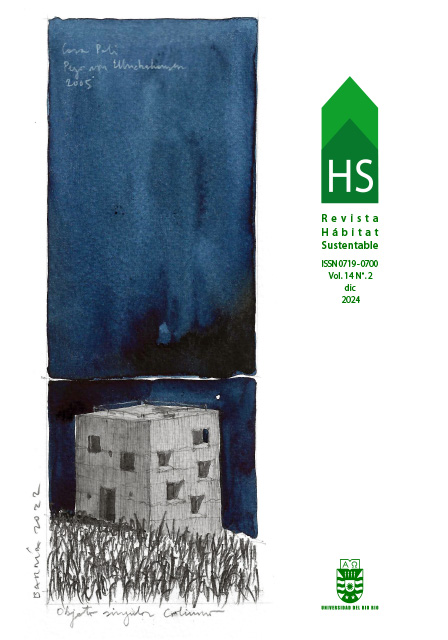
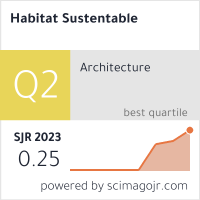








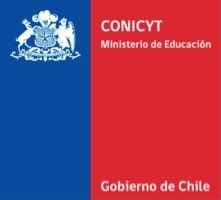 Programa de Información Científica/Concurso Fondos de Publicación de Revistas Científicas 2018/ Proyecto Mejoramiento de Visibilidad de Revistas UBB (Código:FP180007)
Programa de Información Científica/Concurso Fondos de Publicación de Revistas Científicas 2018/ Proyecto Mejoramiento de Visibilidad de Revistas UBB (Código:FP180007) 
